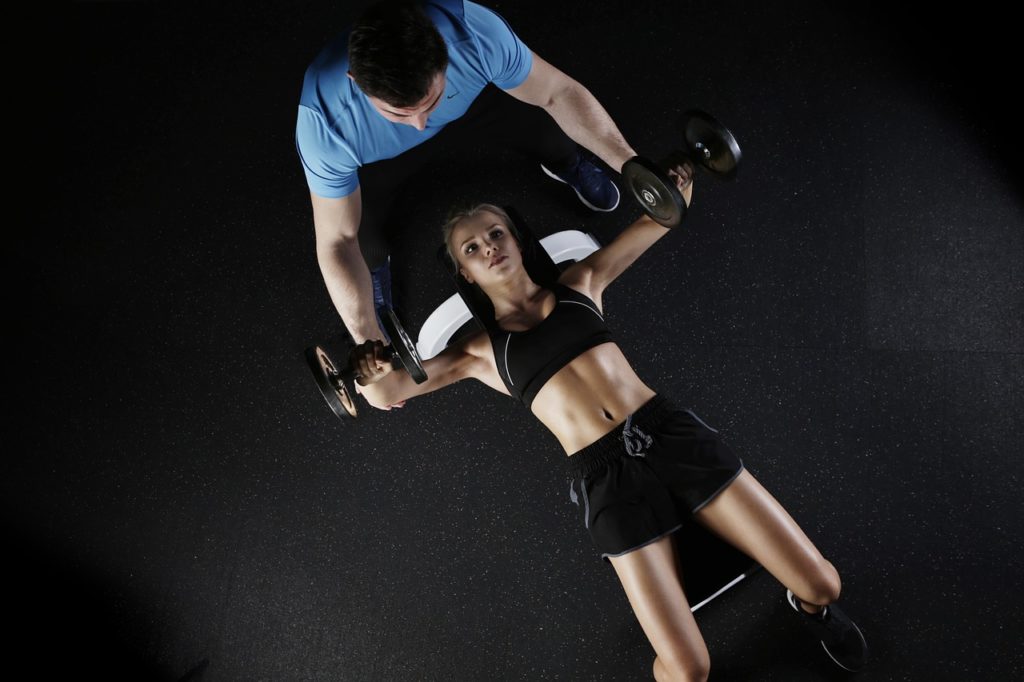If you have ever gone on a diet and lost weight in the past, you might already know just how important exercise is. If you haven’t, we want to give you a refresher course on why you need to exercise.
Exercise is what keeps your metabolism running as fast as possible. The higher your metabolism, the more calories you will burn.
Weight training and other types of exercise will also build more muscle. The fact here is that muscles burn more calories than fat. The more muscle you have, the more you can eat without gaining weight! Also, keeping your muscles firm means that, as you lose weight, you don’t have that flabby, saggy look and also avoid breast sagging.
Exercise Plan to Tone Up and Lose Weight for Women
In this article I will take a look at the best weekly exercise plan that is designed to help women treat obesity, improve breast appearance, and tone muscles.
The Basics
In general, your basic plan is going to look something like this:
- Weight training 3 days per week (one hour each day)
- Interval, high intensity training one day per week (20 minutes)
- Steady burn cardio workout one day per week (30-45 minutes)
- Recovery mode 2 days each week
You can choose to do these workouts in any order you please. You should do a 5-minute warm-up, such as running in place for two minutes, walking for a minute, and then stretching your legs and arms for another two or three minutes, before you start on your exercise routine. Give yourself time to cool down afterwards and stretch again to help keep your muscles from cramping later on.
Weight Training
Sometimes called strength training, these are the most important exercises when it comes to building muscle and treating obesity. If you only have time to do one exercise, these are the ones you will want to do.
- Work your lower body by using dumbbells or kettle bell swings
- Work the upper body by using dumbbells
- Work your core muscles by using lower body moves such as Bulgarian split squats, as well as plank exercises
Do these three days per week, each session lasting 1 hour.
High Intensity Interval Training
Sometimes called HIIT for short, this means you choose a cardio type of activity, such as fast walking or bicycle riding, then alternate by pushing yourself as hard as possible for 30 seconds, then returning to normal speed for 3 to 5 minutes, then push yourself again for another 30 seconds. Repeat this pattern for 20 minutes.
Do this exercise 1 day per week for 20-25 minutes.
Steady Cardio Workout
This is pretty much what it sounds like. Go walking, running, swimming, bike riding or whatever cardio workout you like best. Don’t go all out; just keep up a steady pace for 30-45 minutes.
Do this workout 1 day per week.
Recovery Days
Allow your body to recover from the workouts 2 days per week. If your muscles are sore, take things easy. If not, don’t be a couch potato! You should at least stretch, perhaps do some yoga, and take the dog for an extra long, but slow, walk.
This exercise plan might seem like a great deal of work, but it will certainly pay off in the end!
Weight Loss and Breast Lifting: A Holistic Approach for Women
How Can a Woman Lose Weight and Lift Her Breasts?
Many women aspire to not only lose weight but also maintain or enhance the appearance of their breasts. While spot reduction is not possible, combining weight loss strategies with targeted exercises can help women achieve their goals. It’s important to approach weight loss and breast lifting holistically, focusing on overall body fat reduction, muscle toning, and breast-supporting exercises.
Here are some effective strategies to help women lose weight while working on lifting their breasts:
- Balanced and Nutritious Diet: A balanced and nutritious diet plays a crucial role in weight loss and breast health. Aim for a calorie deficit by consuming fewer calories than you burn, while ensuring you meet your body’s nutritional needs. Include plenty of fruits, vegetables, whole grains, lean proteins, and healthy fats in your diet. Adequate protein intake supports muscle growth and repair, which can help maintain breast firmness. Stay hydrated and limit the consumption of processed and sugary foods that can contribute to weight gain and negatively impact breast tissue.
- Regular Exercise Routine: Incorporate both cardiovascular exercises and strength training into your fitness routine. Cardio exercises, such as brisk walking, jogging, or cycling, help burn calories and promote overall weight loss. Strength training exercises, including chest presses, push-ups, and dumbbell flyes, target the muscles beneath the breasts and can help improve their appearance by providing lift and firmness. It’s important to work with a qualified fitness professional to ensure proper form and execution of exercises.
- Chest and Posture Exercises: In addition to strength training, specific exercises targeting the chest muscles and posture can contribute to breast lifting. These exercises help strengthen the pectoral muscles and improve the overall appearance of the breasts. Examples include chest presses, dumbbell pullovers, and exercises that focus on back and shoulder muscles, such as rows and shoulder retractions. Good posture, achieved through exercises and conscious awareness, can also enhance the lift and appearance of the breasts.
- Supportive Bras and Proper Fitting: Wearing supportive bras that provide adequate lift and comfort is essential for maintaining breast health. Choose bras with proper cup sizes and good overall support. Sports bras with integrated compression or encapsulation are ideal for physical activities. A well-fitting bra not only enhances breast shape but also improves posture, preventing sagging and discomfort during exercise.
- Gradual Weight Loss Approach: Avoid crash diets or rapid weight loss methods, as they can negatively affect breast tissue and elasticity. Instead, opt for a gradual weight loss approach, aiming to lose 1-2 pounds per week. Slow and steady weight loss helps preserve muscle mass, including the chest muscles, and minimizes the risk of sagging breasts often associated with rapid weight loss.
Weight loss and breast lifting for women require a multifaceted approach that combines a balanced diet, regular exercise, targeted strength training, and proper breast support. Embrace a holistic mindset, focusing on overall health and well-being rather than solely on breast appearance. Remember, individual results may vary, and it’s important to consult with healthcare professionals, such as a registered dietitian and fitness expert, to personalize your approach based on your unique needs and goals.
Restoring Breast Appearance after Weight Loss
Weight loss is an accomplishment to be proud of, but it can sometimes result in changes to breast appearance due to the reduction of fat and potential loss of breast volume.
Restoring breast appearance after weight loss is a process that requires a multifaceted approach. By combining strength training exercises, maintaining a healthy diet, moisturizing the skin, wearing supportive bras, and considering cosmetic procedures when necessary, women can work towards rejuvenating their breasts.
Each individual’s situation is unique, so it’s essential to consult with healthcare professionals, such as a plastic surgeon or dermatologist, to determine the most suitable approach for restoring breast appearance based on your specific needs and goals.



4 Comments